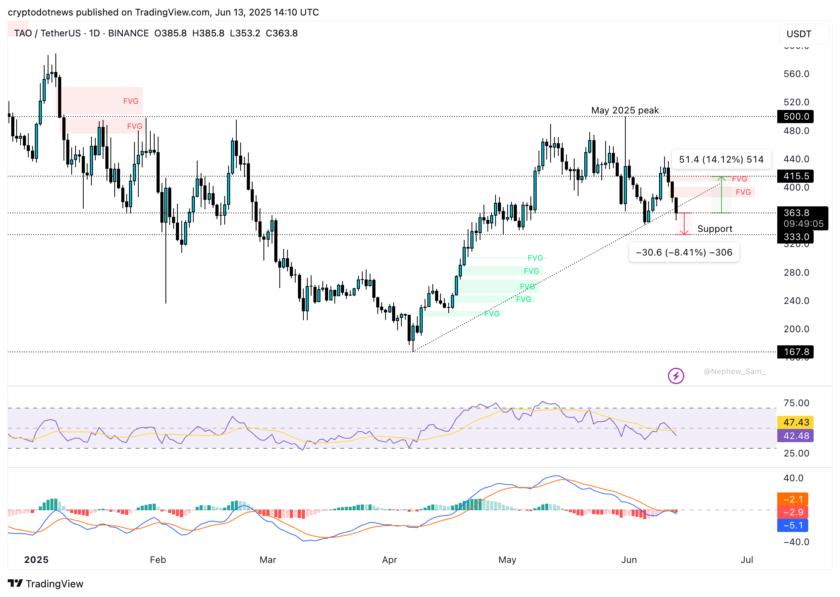Cryptocurrencies are commonly known for being a store of value, but as the blockchain space continues to mature, utility tokens are being created that extend their benefits beyond mere financial gains.
Scott Gralnick, director of global partnerships for ShapeShift — a Swiss cryptocurrency exchange — told Cointelegraph that cryptocurrency can help launch Web 3.0 as more utility tokens are designed to provide functions beyond market value:
“At ShapeShift, we are looking past the idea of whether a token has value and can be traded or held. Moving forward, we hope that tokens will have functionality beyond being just a digital asset. Rather, we believe tokens will enable a fully decentralized ecosystem.”
While there still isn’t a clear definition of “Web 3.0,” the term is used to describe technologies that will power the future of the internet. As such, many in the crypto community believe that this future version of the web will be decentralized.
Don Tapscott, a famous author and co-founder of the Blockchain Research Institute, told Cointelegraph that Web 3.0 is in the eye of the beholder. “There are many definitions, but in general I’m unenthusiastic about stage theories. I find that, over time people start to shape reality to fit their own theory,” he said.
Multi-utility tokens designed to drive Web 3.0
In order to enable true decentralization, Gralnick explained that ShapeShift’s FOX loyalty token, which launched in November 2019, has advanced into a multi-utility token that can now be used in three ways across the ShapeShift ecosystem.
Although FOX tokens hold value, Gralnick mentioned that they also provide users with free trading on the ShapeShift platform. Additionally, Gralnick shared that ShapeShift recently released a product feature called “Rainfall” that rewards ShapeShift users for holding FOX tokens. “If you are a verified ShapeShift user and are holding FOX in your wallet then you are automatically entered into Rainfall,” said Gralnick.
Simply speaking, Rainfall is designed to reward ShapeShift users holding FOX with the U.S. dollar-backed stablecoin, USD Coin (USDC). For instance, each time a ShapeShift user makes a trade on the platform, they are entered to win free amounts of USDC. Gralnick shared that users holding larger amounts of FOX tokens have better chances of winning the stablecoin. Although the project was launched on Oct. 28, Gralnick shared that over 5,000 Rainfall rewards have been given to users, noting that 3% of users have received over $25 worth of USDC.
It’s important to point out that Rainfall is different from staking. Eric Voorhees, founder of Shapeshift, told Cointelegraph that while some may consider Rainfall to be ”staking for rewards,” it is actually much simpler. “Our users don’t need to commit their FOX tokens anywhere. As long as they hold them, they’re earning the Rainfall payments,” he said.
Binance, one of the world’s largest cryptocurrency exchanges, similarly uses its native Binance Coin (BNB) token to provide users with multiple features.
Changpeng Zhao, CEO of Binance, told Cointelegraph that Binance’s BNB token has multiple forms of utility. While BNB is known for powering the Binance ecosystem with its underlying gas, Zhao mentioned that it’s also used for trading fees across both the company’s exchange and decentralized exchange.
Moreover, BNB is used for token sales on Binance Launchpad, along with merchant payments. For example, in May, it was announced that CoinPayments, a leading cryptocurrency payments provider, will support Binance’s BNB token for merchants around the world. The BNB token has also been used to reward users, as demonstrated when Binance offered BNB tokens for testing Binance’s decentralized exchange when it was launched. Zhao commented:
“There are so many applications and use cases for BNB, from gaming to cross-border remittances. There is a large diverse community in the BNB ecosystem now. I don’t know what they will come up with next, but I am sure many of them will be very exciting.”
Zhao further noted that Binance believes in long-term value investments, which is what the platform is looking to build for the crypto community at large. Zhao explained that as the industry matures and participants interact with utility tokens, there will be more multi-utility tokens designed to fuel the global ecosystem.
DeFi will drive multi-utility tokens, but what about Web 3.0?
To Zhao’s point, new multi-utility tokens are quickly emerging, especially with the rise of decentralized finance. There are 216 DeFi projects listed on Defiprime.com, along with a list of reputable DeFi tokens associated with certain projects.
And while many DeFi tokens are viewed by the crypto community as a means to “get rich quick,” some go well beyond financial value. For example, Ichi.farm is a new DeFi project that uses a governance token known as “ICHI.”
An Ichi.farm founding member told Cointelegraph that tokens representing sophisticated asset exposure are already becoming more common. For instance, they noted that ICHI is used for voting to ensure the economic policies of the protocol. In addition, 0.5% of Ichi.farm exchange trading volume is automatically converted to ICHI and distributed to those who stake ICHI. Finally, the token is used as an incentive to provide exchange liquidity. Other DeFi projects like Uniswap are also enabling multi-utility tokens. For example, Uniswap’s UNI tokens are used to facilitate community governance.
While this may be, ShapeShift’s Gralnick pointed out that many DeFi projects often enable the most common utility: governance options. Yet Gralnick mentioned that ShapeShift’s FOX token goes well beyond governance:
“We are excited about utility beyond governance and voting rights. We can and should continue to innovate in this area. Rainfall is trying to show the crypto and developer community that tokens should be multi-utility — meaning there should be user benefits not dependent on the token’s value or governance. We are taking steps to demonstrate how tokens should be multi-utility moving forward and will continue to deliver new rollouts.”
Blockchain projects such as Polkadot are also using cryptocurrency to build out Web 3.0. For instance, Polkadot’s DOT token serves three purposes: network governance, operating the network and creating parachains. In this case, the third function plays an important role, as it allows for new parachains — or new blockchain projects — to be built on its network.
Related posts




